Bala
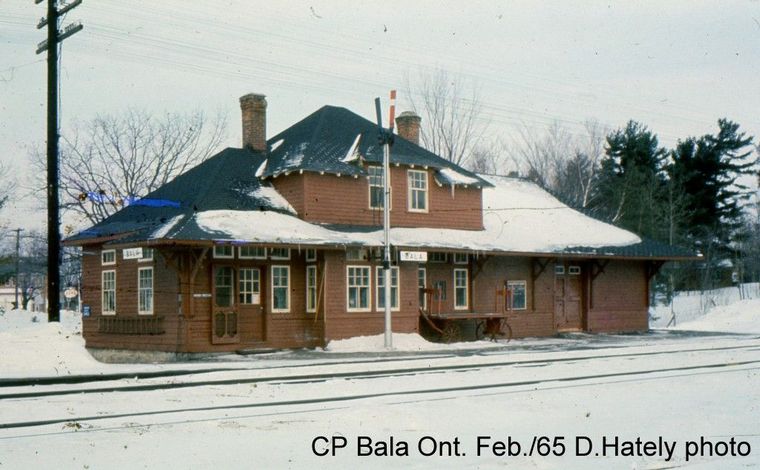
Not what you think of when you say Bala!
Bala Summer Station
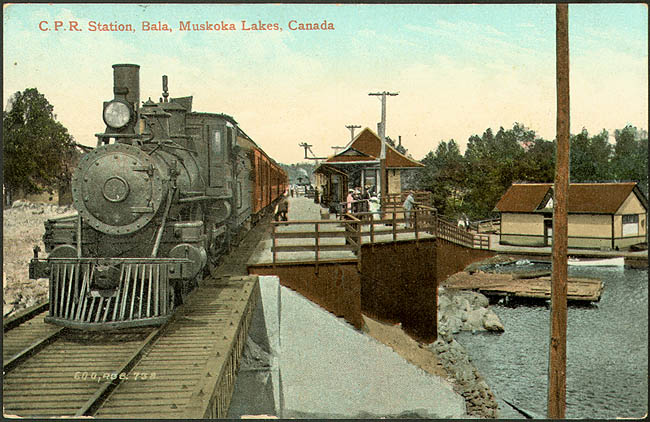
Old post card c.1910 F.W.Micklethaite/Toronto Public Library digital
collections
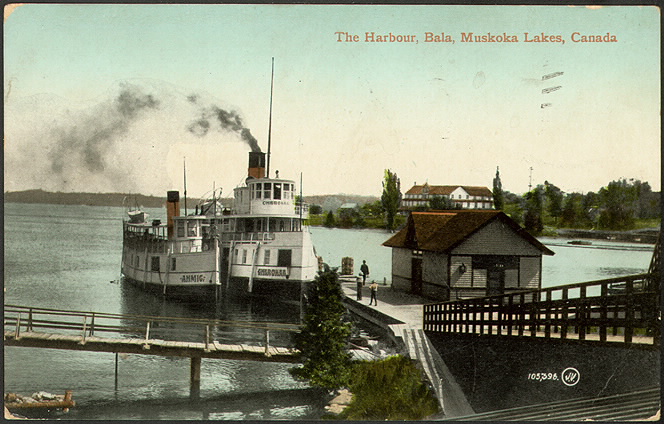
S.S. "Ahmic" and S.S. "Cherokee" at C.P.R. Bala
summer station.
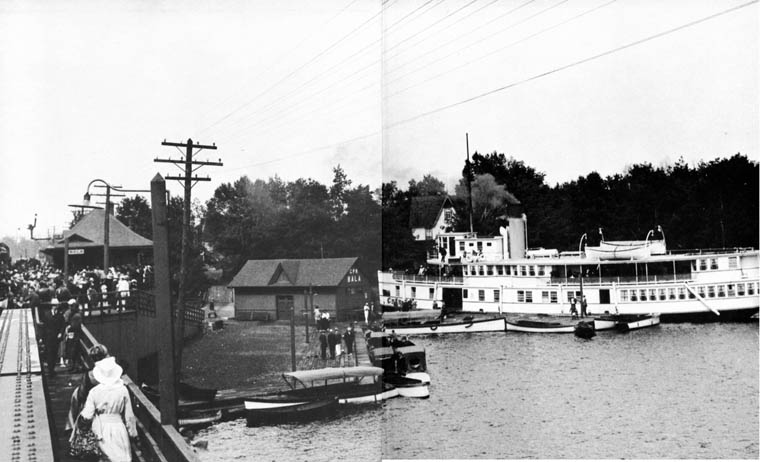
Northbound
train arrived, 1919. S.S.Cherokee at the dock. Public Archives of Canada
PA83885
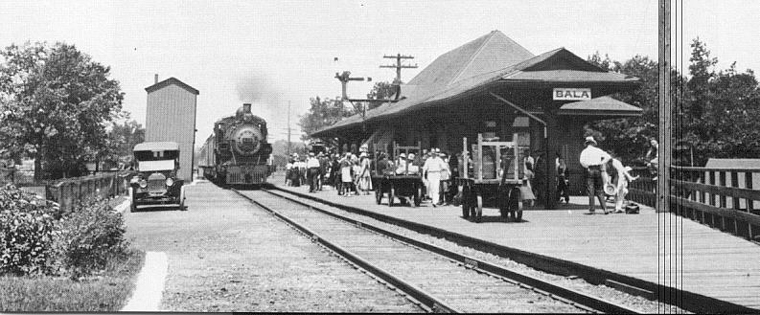
Southbound
train arriving c.1919. National Archives of Canada A83858
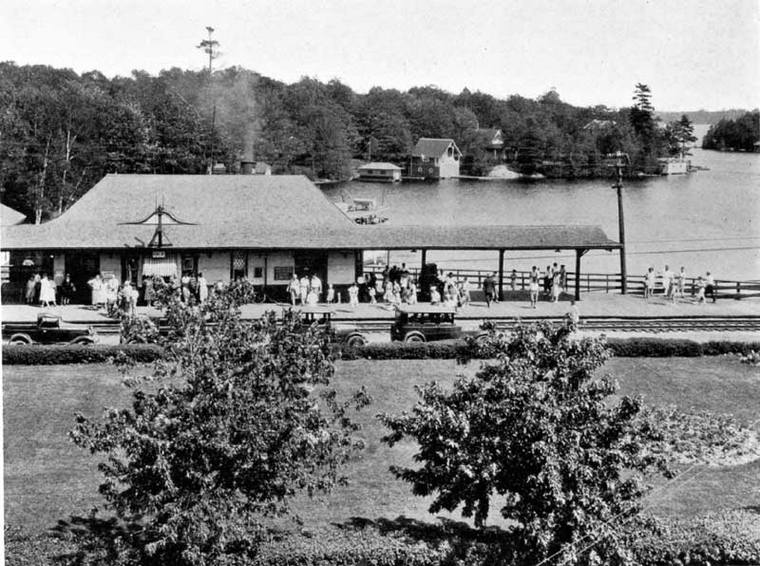
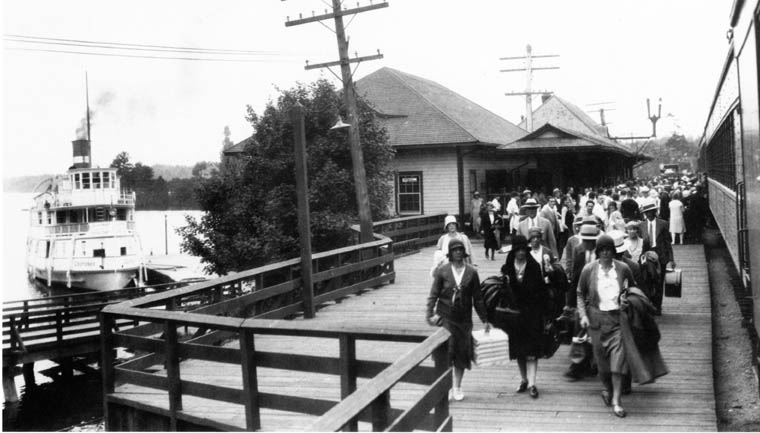
SS
Cherokee
Canadian Pacific Corporate Archives 21723
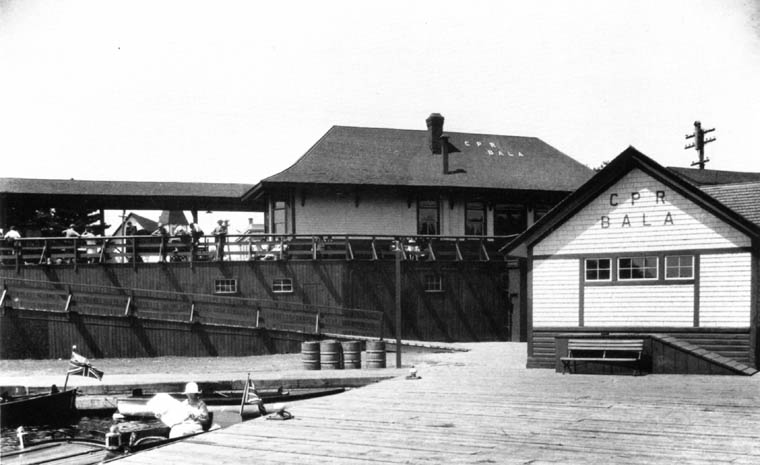
View
from the wharf. Canadian Pacific Corporate Archives 14944
Summer
service to the Muskoka resort area of Bala dated to the opening of the CPR line
north of Bolton to Romford Junction and Sudbury in 1907-08. Prior to this the
Grand Trunk (now CNR) had the Toronto-Muskoka Lakes service to itself, its line
being built many years before the CPR. Their Muskoka Express from Toronto
to Muskoka Wharf (Gravenhurst) met such early day ships as the Nipissing, Islander,
Medora, and Kenozha and in later times the rebuilt Segwun and
Sagamo. In 1901, the construction of the Royal Muskoka Hotel was
begun by the Muskoka Navigation Company on an island in Lake Rosseau. This
was one of the first high class hotels to open in the area. The name itself suggests
opulance, well dressed men and women from well to-do families. The famous hostelry
continued to serve patrons until it burned down in 1952. Just before and after
1901 many stately summer homes were built along the shores of Lakes Muskoka, Rosseau
and Joseph. Timothy Eaton, the great department store entrepreneur, was one of
the first of the wealthy to build in that area, his magnificent summer home on
Lake Rosseau becoming a girls school in later years.
Many affluent American
families were attracted to the beauties of the Muskoka region. A number of families
from the Pittsburg area settled along the shore of Lake Muskoka at Beaumaris and
it became locally known as millionaires row. The result of this gave the CPR impetus
in 1908 to introduce a through sleeping car service between Pittsburg and Bala
on Trains Nos. 85 and 104. At this time, eight CPR passenger trains served the
area.
The summer service flourished down through the years. In 1927 six
trains each way served Bala, four on a daily basis including Trains Nos. 709 -
710 which ran Toronto-Bala-Mactier daily except Sunday. With the influx of the
American business, Bala became a Customs Port of Entry. The Bala Weekend trains
continued to serve the tourists until 1963, by which time the trains had been
renumbered to 317 - 318. The photograph showing the throngs of passengers on the
platform of the Bala Summer station was taken around 1927 and the streamer Cherokee
is shown at the station wharf.
Norm Roberts, now (February 1986) Afternoon Train Order Operator
at Toronto Yard, recalls the time he was the Second Assistant Agent at the Bala
Summer station back in the late 1940s. W.H.N.Rossiter
"The
unusual feature at Bala was the existence of two station buildings, a summer station
and a winter station. The winter station stood on the west side of the track,
opposite the south switch of the passing track. Its location was about a half
mile north of the summer station, away from the water. The summer station stood
on the east side of the track, high on the embankment above Lake Muskoka. This
building was literally situated on an island with the lake to the east, a control
dam for the Muskoka Lakes to the south, a canal to a hydro plant at the north
end of the platform, and the tracks to the west side. An elevator operated next
to the station lunch room to take freight down to the wharf at lake level, behind
this were the stairs for passengers. The S.S. Islander would dock to meet
the noon trains, and the S.S. Segwun, or Sagamo would tie up overnight
to connect with the night trains.
The winter station would close about
the middle of June, except for less than car load freight business. The night
operator and agent would move their business operations to the summer station.
About a week later two Assistant Agents, a Commercial Operator, a messenger boy
and the lunch counter staff would be brought into handle the heavy summer traffic.
They lived in the summer station. After Labour Day the procedure was reversed.
The call letter "Q" was used at both stations.
The most notable
recollections I have about this station during my early relieving years were the
large crowds, the platform was a sea of people meeting the Friday and Sunday night
special. Also of interest was the large number of unchaperoned single girls travelling
on their holidays. Nowadays this would be considered the norm.
On the
Friday night special, the express baggage buffer car would be an old rebuilt troop
transport car with one narrow door from which you had to unload the mountains
of baggage, and boxes of bread. For working this train, which arrived after our
regular hours, one Asistant Agent would receive an overtime call, and the other
would be paid one dollar by the agent, to handle the large bread shipment.
The next station to the south was Severn Falls which was a summer flag station
for Medonte. In late June, the Chief Dispatcher would send you up to Medonte to
pick up the records and open up Severn Falls. The first thing you would do was
advise the dispatcher you were open, also the "RN" (call letter for
the Commercial Telegraph office). After Labour Day, you would close up and the
signal maintenance would come and take down the order board. As far as I know,
this was the only train order board still using a coal oil lamp on our district.
Many was the morning I would come on duty and receive a message from the dispatcher
that my order board light was out.
I believe Bala and Severn Falls were
the only two summer stations (Ed: Port Mc.Nicoll was another one) on the
old Ontario District. This system was done away with in the mid 1950s."
